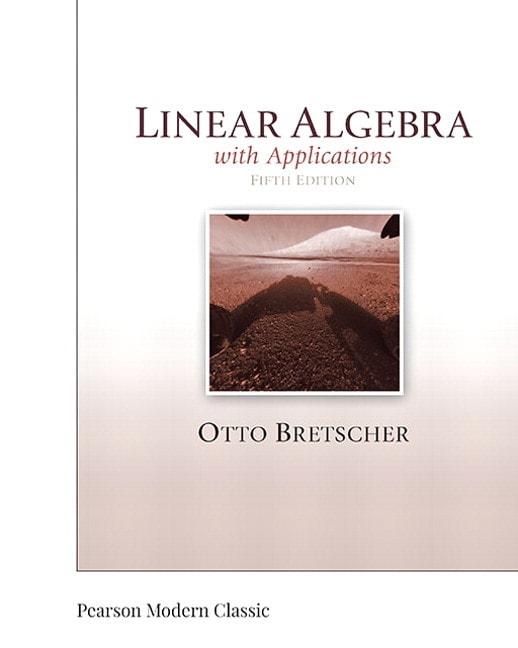
Linear Algebra with Applications (Classic Version), 5th edition
- Otto Bretscher

- Find it fast
Quickly navigate your eTextbook with search
- Stay organized
Access all your eTextbooks in one place
- Easily continue access
Keep learning with auto-renew
Offering the most geometric presentation available, Linear Algebra with Applications emphasizes linear transformations as a unifying theme. This elegant textbook combines a user-friendly presentation with straightforward, lucid language to clarify and organize the techniques and applications of linear algebra. Exercises and examples make up the heart of the text, with abstract exposition kept to a minimum. Exercise sets are broad and varied and reflect the author's creativity and passion for this course. The 5th Edition reflects careful review and appropriate edits throughout, while preserving the order of topics of the previous edition.
Published by Pearson (January 1st 2022) - Copyright © 2013
ISBN-13: 9780137848294
Subject: Advanced Math
Category: Linear Algebra
1. Linear Equations
1.1 Introduction to Linear Systems
1.2 Matrices, Vectors, and Gauss-Jordan Elimination
1.3 On the Solutions of Linear Systems; Matrix Algebra
2. Linear Transformations
2.1 Introduction to Linear Transformations and Their Inverses
2.2 Linear Transformations in Geometry
2.3 Matrix Products
2.4 The Inverse of a Linear Transformation
3. Subspaces of Rn and Their Dimensions
3.1 Image and Kernel of a Linear Transformation
3.2 Subspace of Rn; Bases and Linear Independence
3.3 The Dimension of a Subspace of Rn
3.4 Coordinates
4. Linear Spaces
4.1 Introduction to Linear Spaces
4.2 Linear Transformations and Isomorphisms
4.3 The Matrix of a Linear Transformation
5. Orthogonality and Least Squares
5.1 Orthogonal Projections and Orthonormal Bases
5.2 Gram-Schmidt Process and QR Factorization
5.3 Orthogonal Transformations and Orthogonal Matrices
5.4 Least Squares and Data Fitting
5.5 Inner Product Spaces
6. Determinants
6.1 Introduction to Determinants
6.2 Properties of the Determinant
6.3 Geometrical Interpretations of the Determinant; Cramer's Rule
7. Eigenvalues and Eigenvectors
7.1 Diagonalization
7.2 Finding the Eigenvalues of a Matrix
7.3 Finding the Eigenvectors of a Matrix
7.4 More on Dynamical Systems
7.5 Complex Eigenvalues
7.6 Stability
8. Symmetric Matrices and Quadratic Forms
8.1 Symmetric Matrices
8.2 Quadratic Forms
8.3 Singular Values
9. Linear Differential Equations
9.1 An Introduction to Continuous Dynamical Systems
9.2 The Complex Case: Euler's Formula
9.3 Linear Differential Operators and Linear Differential Equations
Appendix A. Vectors
Appendix B: Techniques of Proof
Answers to Odd-numbered Exercises
Subject Index
Name Index